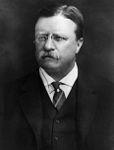Republican Party presidential primaries, 1912
|
|
|||||||||||||||||||||||||||||
|---|---|---|---|---|---|---|---|---|---|---|---|---|---|---|---|---|---|---|---|---|---|---|---|---|---|---|---|---|---|
|
|||||||||||||||||||||||||||||
|
|||||||||||||||||||||||||||||

Results by state
Taft
Roosevelt
La Follette
No Primary
|
|||||||||||||||||||||||||||||
|
|||||||||||||||||||||||||||||
The 1912 Republican presidential primaries were the selection process by which the voters of the Republican Party chose its nominee for President of the United States in the 1912 presidential election. Incumbent President William Howard Taft was chosen as the party's nominee through a series of primaries and caucuses culminating in the 1912 Republican National Convention.
During his first year in office, President Taft set in motion a series of events leading to a split in the Republican Party. By the middle of 1909, progressive Republicans had started accusing Taft of granting the pro-business wing of the party near total leeway on the filling of political positions.
The off-year elections of 1909 were to a large degree fought on local issues relating to reform, and they were mostly a draw between the two parties. In New York State, Governor Charles E. Hughes asked the legislature to pass a bill providing for primary elections for each state office except for that of presidential electors. The proposal for primaries became the major issue in the state legislative elections, in which the Democrats gained five seats. Gubernatorial races were retained by the Republicans in Rhode Island and Massachusetts, though in the latter state bolting reformers almost delivered the race to the Democrats. Reformers won control of the mayoralty of Indianapolis, but "machine" candidates won in New York City, Buffalo, Albany, and Cincinnati.
The following year (1910), former President Theodore Roosevelt and sitting Vice President James S. Sherman both sought to be the temporary chairman of the New York State Republican convention. Sherman's victory there was the first sign that the progressive Republicans faced major challenges if they wanted to work within the party. The rift spilled over into Michigan, where local conventions in the summer became polarized over Roosevelt.
...
Wikipedia



